Filter by
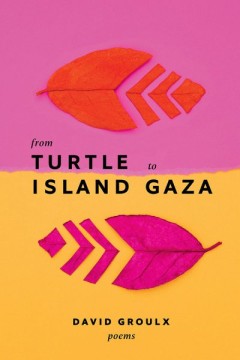
From Turtle Island to Gaza
With a sure voice, Groulx, an Anishnaabe writer, artistically weaves together the experiences of Indigenous peoples in settler Canada with those of the people of Palestine, revealing a shared understanding of colonial pasts and presents.
- Edition
- -
- ISBN/ISSN
- 9781771992619.01
- Collation
- -
- Series Title
- Mingling Voices
- Call Number
- 5 x 7.5, 68 pages
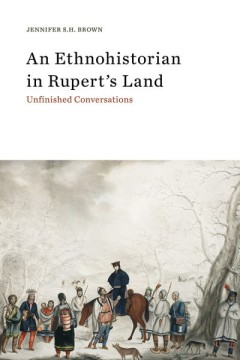
An Ethnohistorian in Rupert’s Land Unfinished Conversations
In 1670, the ancient homeland of the Cree and Ojibwe people of Hudson Bay became known to the English entrepreneurs of the Hudson’s Bay Company as Rupert’s Land, after the founder and absentee landlord, Prince Rupert. For four decades, Jennifer S. H. Brown has examined the complex relationships that developed among the newcomers and the Algonquian communities—who hosted and tolerated the …
- Edition
- -
- ISBN/ISSN
- 9781771991711.01
- Collation
- -
- Series Title
- -
- Call Number
- 6 x 9, 368 pages
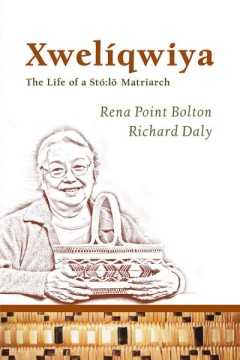
Xwelíqwiya The Life of a Stó:lō Matriarch
Xwelíqwiya is the life story of Rena Point Bolton, a Stó:lō matriarch, artist, and craftswoman. Proceeding by way of conversational vignettes, the beginning chapters recount Point Bolton’s early years on the banks of the Fraser River during the Depression. While at the time the Stó:lō, or Xwélmexw, as they call themselves today, kept secret their ways of life to avoid persecution by the…
- Edition
- -
- ISBN/ISSN
- 9781927356562.01
- Collation
- -
- Series Title
- Our Lives: Diary, Memoir, and Letters
- Call Number
- 312 pages
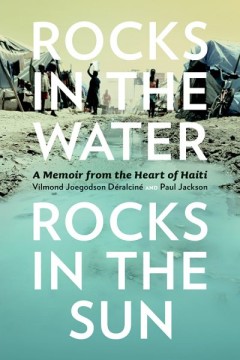
Rocks in the Water, Rocks in the Sun A Memoir from the Heart of Haiti
When Joegodson Déralciné was still a small child, his parents left rural Haiti to resettle in the rapidly growing zones of Port-au-Prince. As his family entered the city in 1986, Duvalier and his dictatorship exited. Haitians, once terrorized under Duvalier’s reign, were liberated and emboldened to believe that they could take control of their lives. But how? Joining hundreds of thousands o…
- Edition
- -
- ISBN/ISSN
- 9781771990110.01
- Collation
- -
- Series Title
- Our Lives: Diary, Memoir, and Letters
- Call Number
- 390 pages
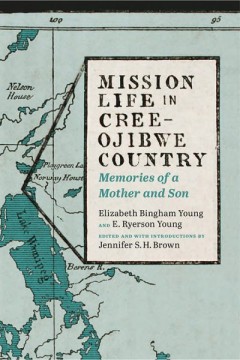
Mission Life in Cree-Ojibwe Country Memories of a Mother and Son
In May of 1868, Elizabeth Bingham Young and her new husband, Egerton Ryerson Young, began a long journey from Hamilton, Ontario, to the Methodist mission of Rossville. For the next eight years, Elizabeth supported her husband’s work at two mission houses, Norway House and then Berens River. Unprepared for the difficult conditions and the “eight months long” winter, and unimpressed with �…
- Edition
- Jennifer S. H. Brown
- ISBN/ISSN
- 9781771990035.01
- Collation
- -
- Series Title
- Our Lives: Diary, Memoir, and Letters
- Call Number
- 336 pages
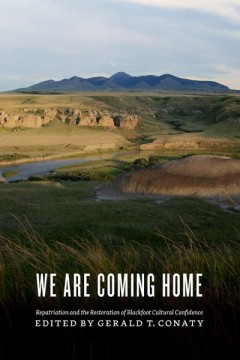
We Are Coming Home Repatriation and the Restoration of Blackfoot Cultural Co…
In 1990, Gerald Conaty was hired as senior curator of ethnology at the Glenbow Museum, with the particular mandate of improving the museum’s relationship with Aboriginal communities. That same year, the Glenbow had taken its first tentative steps toward repatriation by returning sacred objects to First Nations’ peoples. These efforts drew harsh criticism from members of the provincial gover…
- Edition
- -
- ISBN/ISSN
- 9781771990172.01
- Collation
- -
- Series Title
- -
- Call Number
- 304 pages

Imagining Head-Smashed-In Aboriginal Buffalo Hunting on the Northern Plains
At the place known as Head-Smashed-In in southwestern Alberta, Aboriginal people practiced a form of group hunting for nearly 6,000 years before European contact. The large communal bison traps of the Plains were the single greatest food-getting method ever developed in human history. Hunters, working with their knowledge of the land and of buffalo behaviour, drove their quarry over a cliff and…
- Edition
- -
- ISBN/ISSN
- 9781897425046.01
- Collation
- -
- Series Title
- -
- Call Number
- 6.5 x 9.25, 361 pages
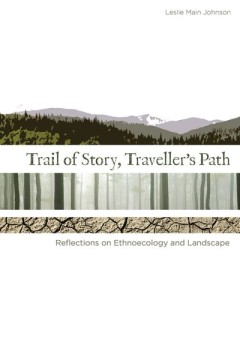
Trail of Story, Traveller’s Path Reflections on Ethnoecology and Landscape
With passion and conviction, Johnson maintains that our response to our environment shapes our culture, determines our lifestyle, defines our identity, and sets the tone for our relationships and economies. With photos, she documents the landscape and contrasts the ecological relationships with land of First Nations peoples to those of non-indigenous scientists. The result is an absorbing study…
- Edition
- -
- ISBN/ISSN
- 9781897425350.01
- Collation
- -
- Series Title
- -
- Call Number
- 267 pages

Memory and Landscape Indigenous Responses to a Changing North
The North is changing at an unprecedented rate as industrial development and the climate crisis disrupt not only the environment but also long-standing relationships to the land and traditional means of livelihood. Memory and Landscape: Indigenous Responses to a Changing North explores the ways in which Indigenous peoples in the Arctic have adapted to challenging circumstances, including past c…
- Edition
- -
- ISBN/ISSN
- 9781771993159.01
- Collation
- -
- Series Title
- -
- Call Number
- 9 x 10, 448 pages

Light from Ancient Campfires Archaeological Evidence for Native Lifeways on …
Light from Ancient Campfires is the first book in twenty years to gather together a comprehensive prehistoric archaeological record of the Northern Plains First Nations. In this important examination of the region’s earliest inhabitants, author Trevor Peck reviews the many changes of interpretation that have occurred in relevant literature published during the last two decades. Beginning with…
- Edition
- -
- ISBN/ISSN
- 9781897425961.01
- Collation
- -
- Series Title
- -
- Call Number
- 528 pages
 Computer Science, Information & General Works
Computer Science, Information & General Works  Philosophy & Psychology
Philosophy & Psychology  Religion
Religion  Social Sciences
Social Sciences  Language
Language  Pure Science
Pure Science  Applied Sciences
Applied Sciences  Art & Recreation
Art & Recreation  Literature
Literature  History & Geography
History & Geography